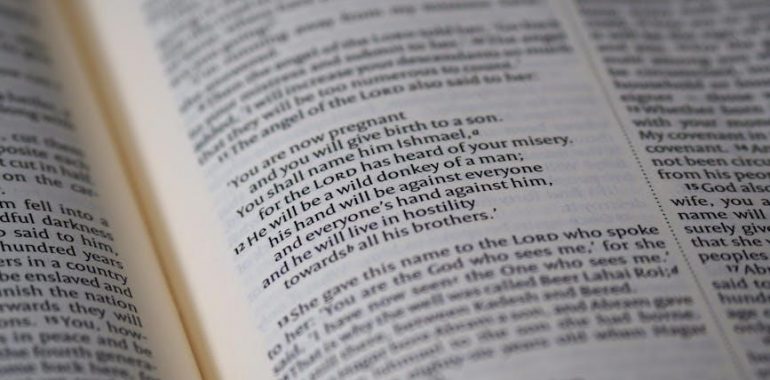latin vulgate bible in english pdf

latin vulgate bible in english pdf
The Latin Vulgate Bible, translated by St. Jerome, is a foundational Christian text, offering a Latin version of the Holy Scriptures. Its influence spans centuries, shaping theology and liturgy. English translations, like the Douay-Rheims Bible, ensure its accessibility, bridging Latin scholarship with modern readers.
1.1 Overview of the Latin Vulgate Bible
The Latin Vulgate Bible, translated by St. Jerome in the 4th century, is a seminal Christian text, providing a Latin rendition of the Holy Scriptures. It served as the authoritative biblical text in the Western Church for over a millennium, influencing theology, liturgy, and culture. The Vulgate’s significance lies in its faithful rendering of Hebrew, Greek, and Aramaic originals into Latin, making it accessible to a broader audience. Today, English translations of the Vulgate, such as the Douay-Rheims Bible, ensure its enduring relevance. Digital formats, including PDFs, have further enhanced its accessibility, allowing modern readers to engage with this historic text seamlessly.
1.2 Historical Context and Significance
The Latin Vulgate Bible, commissioned by Pope Damasus I and completed by St. Jerome, emerged in the late 4th century as a unified Latin text for the Western Church. It replaced earlier fragmented translations, standardizing the biblical narrative and fostering theological unity. The Vulgate’s influence peaked during the Middle Ages, becoming the primary text for liturgy, education, and biblical studies. Its authority endured until the Protestant Reformation, though it remained central to Catholic traditions. The Vulgate’s historical significance is profound, shaping Western Christianity and providing a linguistic bridge between the ancient world and modern times. Its enduring legacy is evident in its continued use and translation into English.

The Latin Vulgate Bible in English
The Latin Vulgate Bible is widely available in English translations, with notable versions like the Douay-Rheims Bible and modern adaptations, ensuring accessibility for English-speaking audiences.
2.1 The Douay-Rheims Bible: A Historical English Translation
The Douay-Rheims Bible is the earliest English translation of the Latin Vulgate, completed in 1610. Produced by Catholic scholars at Douay and Rheims, it aimed to provide an accurate English version for Catholics, countering Protestant translations. The Old Testament was published in 1609, and the New Testament in 1582. Notable for its fidelity to Jerome’s Latin text, it remains influential in Catholic biblical studies. Its formal, literal style reflects the Vulgate’s structure, making it a valuable resource for scholars and devotees alike. The Douay-Rheims Bible has undergone revisions, most notably by Bishop Richard Challoner, enhancing its readability while preserving its doctrinal integrity.
2.2 Modern English Translations of the Vulgate
Modern English translations of the Latin Vulgate aim to balance fidelity to Jerome’s original text with contemporary readability. The Catholic Public Domain Version (CPDV), released in 2009, is a notable example, drawing from the Vulgate while incorporating insights from the Douay-Rheims Bible. Another significant work is the translation by Ronald L. Conte Jr., based on the 1914 Hetzenauer edition of the Vulgate, which also references the Challoner revision of the Douay-Rheims. These translations cater to both scholarly and devotional needs, ensuring the Vulgate’s timeless teachings remain accessible to modern English-speaking audiences. They emphasize accuracy and clarity, preserving the theological richness of the original Latin text for new generations.
2.3 The Role of the Vulgate in English-Language Biblical Studies
The Latin Vulgate holds a pivotal role in English-language biblical studies, serving as a bridge between ancient texts and modern scholarship. Its meticulous translation by St. Jerome provides a Latin lens through which scholars analyze the original Hebrew and Greek Scriptures. English translations of the Vulgate, such as the Douay-Rheims Bible, have historically shaped theological understanding and liturgical practices. Today, the Vulgate remains a critical resource for exegesis, offering insights into textual variations and doctrinal developments. Scholars often cross-reference the Vulgate with English versions to enrich biblical analysis; Additionally, its influence on Western Christianity underscores its importance in understanding the historical and theological underpinnings of Scripture, making it indispensable for both academic and devotional study.

Key Features of the Latin Vulgate Bible
The Latin Vulgate, translated by St. Jerome, features Jerome’s precise Latin rendering of Hebrew and Greek texts, inclusion of the Apocrypha, and a clear Old and New Testament structure.
3;1 Structure of the Vulgate: Old and New Testaments
The Latin Vulgate is divided into the Old and New Testaments, reflecting the traditional Christian Bible structure. The Old Testament includes books from the Hebrew Bible and additional texts like Tobit and Judith, known as the Apocrypha. The New Testament encompasses the Gospels, Acts, Epistles, and Revelation. Jerome’s translation maintains the canonical order, ensuring theological coherence. This structure is preserved in English translations, such as the Douay-Rheims Bible, allowing for consistent study and reference. The Vulgate’s organization mirrors the original Hebrew and Greek sources, providing a comprehensive framework for understanding sacred scripture.
3.2 The Apocrypha in the Vulgate
The Latin Vulgate includes the Apocrypha, books not found in the Hebrew Bible but considered canonical by the Catholic Church. These texts, such as Tobit, Judith, and the Maccabees, are integral to the Vulgate’s structure, reflecting Jerome’s inclusion of them in his translation. They are recognized as part of the Catholic canon, unlike Protestant traditions, which view them as non-canonical.
In English translations like the Douay-Rheims Bible, the Apocrypha are retained, preserving their theological significance. Their inclusion in the Vulgate underscores their historical and liturgical importance, making them accessible in PDF formats, such as the 1685 edition, for modern study.
3.4 The Language and Style of Jerome’s Translation
Jerome’s translation of the Vulgate is renowned for its precision and fidelity to the original texts. He employed a clear and accessible Latin style, balancing literal accuracy with readability. Jerome’s approach was meticulous, often incorporating Hebrew and Greek sources to ensure authenticity. His language reflects a deep theological understanding, making the Vulgate a cornerstone of Christian scripture. The Vulgate’s style has influenced numerous English translations, such as the Douay-Rheims Bible, which adapted Jerome’s work for English-speaking audiences. Its enduring legacy lies in its ability to bridge ancient texts with modern readers, preserving theological depth while maintaining linguistic clarity. This balance has made the Vulgate indispensable in biblical studies and devotion.

The Latin Vulgate Bible in PDF Format
The Latin Vulgate Bible is widely available in PDF format, including the 1685 edition and the Clementine Vulgate, accessible via sources like Church Latin Publishing Company and Archive.org for personal study and academic use.
4.1 Sources for Downloading the Latin Vulgate Bible in PDF
The Latin Vulgate Bible in PDF format is readily available from various online sources. The Unbound Bible project and Archive.org offer free downloads, including the 1685 edition and the Clementine Vulgate. SacredBible.org provides the Catholic Public Domain Version (CPDV), a modern translation based on the Vulgate. Additionally, the Church Latin Publishing Company offers scans of historical editions, such as the 1901 printing of the Clementine Vulgate. These resources cater to both scholarly research and personal devotion, ensuring accessibility to this foundational Christian text. Users can easily find and download these PDFs, which are often accompanied by English translations for comparative study.
4.2 The 1685 Edition of the Latin Vulgate
The 1685 edition of the Latin Vulgate, known as the Biblia Sacra Vulgata, is a significant publication of the Catholic Church. This edition reflects the textual tradition established by earlier scholars and councils. It is available in PDF format, offering scholars and enthusiasts a digital version of this historical text. The 1685 Vulgate is noted for its fidelity to Jerome’s original translation and its role in liturgical and academic contexts. While some pages may show signs of aging, the PDF ensures preservation and accessibility for modern study and research, making it a valuable resource for those interested in the Latin Vulgate’s rich history.
4.3 The Clementine Vulgate and Its Digital Availability
The Clementine Vulgate, published in 1592 under Pope Clement VIII, is a critical edition of the Latin Vulgate, considered the official Bible of the Catholic Church. It is widely regarded for its textual accuracy and historical significance. In the digital age, the Clementine Vulgate is available as a free PDF download from various sources, including the Church Latin Publishing Company. The PDF version is scanned from a 1901 printing, preserving the original formatting and readability. Additionally, a black and red letter edition from 1881 is being reprinted as part of the Vulgate Project. This digital accessibility ensures that scholars and enthusiasts can explore this foundational text with ease, maintaining its legacy in modern times.

English Translations of the Latin Vulgate
The Latin Vulgate has been translated into English through notable versions like the Douay-Rheims Bible, Challoner Revision, and the Catholic Public Domain Version (CPDV), ensuring its teachings remain accessible.
5.1 The Douay-Rheims Version: History and Characteristics
The Douay-Rheims Bible, published in 1582 (New Testament) and 1609 (Old Testament), is the first English translation of the Latin Vulgate. Produced by Catholic scholars at Douay and Rheims, it aimed to counter Protestant translations and uphold Catholic doctrine. Notably, it includes annotations defending Catholic teachings. The translation is literal, closely following the Vulgate’s structure and terminology, which sometimes results in archaic English. Its historical significance lies in preserving the Vulgate’s authority during the Reformation and Counter-Reformation periods. The Douay-Rheims remains a vital resource for Catholics, offering a faithful rendering of Jerome’s Latin text into English, enriching biblical studies and devotion.
5.2 The Challoner Revision of the Douay-Rheims Bible
The Challoner Revision, completed by Bishop Richard Challoner in the mid-18th century, modernized the Douay-Rheims Bible, making it more accessible to English readers. Challoner updated archaic language, streamlined syntax, and clarifed ambiguous phrases while preserving the original’s fidelity to the Latin Vulgate. He also expanded annotations to address theological questions and scriptural misunderstandings. The revision maintained the Douay-Rheims’ distinctive style but rendered it more readable. This version became the standard English Catholic Bible for over two centuries, influencing liturgy and personal devotion. Its enduring relevance lies in its balance of scholarly accuracy and spiritual depth, ensuring the Vulgate’s timeless message remains vibrant in the English-speaking world.
5.3 The Catholic Public Domain Version (CPDV)
The Catholic Public Domain Version (CPDV) is a modern English translation of the Latin Vulgate Bible, published by Ronald L. Conte Jr. It draws from the 1914 Hetzenauer edition of the Vulgate, with the Challoner revision of the Douay-Rheims Bible serving as a guide. The CPDV aims to provide a faithful and readable rendering of the Vulgate, preserving its theological richness. It is designed for personal devotion, study, and liturgical use. The translation is available in digital formats, including PDF, making it accessible for free download. The CPDV is notable for its clarity and fidelity to the original Latin text, ensuring the Vulgate’s teachings remain accessible to contemporary English-speaking audiences while maintaining its historical and doctrinal integrity.

Interlinear and Study Editions
Interlinear editions combine Latin Vulgate text with English translations, aiding linguistic and theological study. Study Bibles offer comparative analysis tools, enhancing understanding of biblical texts and their historical context.
6.1 Latin-English Interlinear Bibles: Features and Accuracy
Latin-English interlinear Bibles provide a word-for-word translation, aligning Latin text with its English counterpart. This format aids scholars in analyzing linguistic nuances and theological concepts; The Nova Vulgata interlinear version, available in PDF, offers precise translations, though some rely on automated tools like Google Translate, which may lack accuracy. These resources are invaluable for comparative biblical studies, allowing users to explore original Latin meanings alongside modern English interpretations. Despite occasional inaccuracies in machine translations, interlinear Bibles remain a crucial tool for deep textual analysis and understanding the Vulgate’s rich historical context.
6.2 Study Bibles Combining the Vulgate and English Translations
Study Bibles that combine the Latin Vulgate with English translations offer a comprehensive resource for scholars and readers. These editions often feature parallel columns, showcasing the original Latin text alongside its English equivalent, such as the Douay-Rheims or Challoner Revision. They include commentary, annotations, and historical notes to enhance understanding. The 1914 Hetzenauer edition, used as a basis for modern translations, provides a reliable foundation. Tools like cross-references and theological explanations further enrich the study experience. These bibles are ideal for academic research, personal devotion, and liturgical preparation, making the Vulgate accessible while preserving its scholarly integrity. PDF versions of such study bibles are widely available for digital access.
6.3 Tools for Comparative Biblical Analysis
Tools for comparative biblical analysis enable scholars to examine the Latin Vulgate alongside its English translations, fostering deeper textual understanding. Resources like the Unbound Bible project and Archive.org provide digital access to parallel texts, allowing side-by-side comparison of Latin and English versions. Interlinear bibles, such as those using Google Translate, offer word-for-word comparisons, though accuracy may vary. Additionally, platforms like SacredBible.org provide modern translations based on the Vulgate, aiding in contextual and linguistic studies. These tools are invaluable for identifying textual variations, tracing theological themes, and conducting historical exegesis. They cater to both academic research and personal study, ensuring the Vulgate’s relevance in modern biblical scholarship.

Digital Resources and Archives
Digital resources like Archive.org offer extensive collections of the Latin Vulgate in English PDFs, while platforms like SacredBible.org and the Unbound Bible project provide accessible study tools and aids for scholars and enthusiasts alike.
7.1 The Unbound Bible Project: A Digital Repository
The Unbound Bible Project serves as a comprehensive digital repository, offering free access to numerous biblical texts, including the Latin Vulgate. It provides various tools such as parallel Bible versions, study aids, and downloadable resources. Users can explore the Vulgate alongside its English translations, facilitating comparative analysis. The project emphasizes accessibility, ensuring that scholarly and personal study materials are available to everyone without cost. This initiative has been instrumental in preserving and promoting the Vulgate’s legacy in the digital age, making it a valuable resource for both academic research and personal devotion.
7.2 Archive.org and Its Collection of Vulgate Resources
Archive.org is a vast digital archive that hosts an extensive collection of Latin Vulgate resources, including PDF versions of historical editions. Among its offerings is the 1685 Latin Vulgate Bible, known as the Biblia Sacra Vulgata, which is a significant publication for scholarly and personal use. The platform also features interlinear Latin-English Bibles, such as the Nova Vulgata, which combines the Vulgate text with English translations for comparative study. Additionally, Archive.org provides access to rare and historical texts related to the Vulgate, making it a valuable resource for researchers and enthusiasts alike. Its nonprofit model relies on donations to sustain its mission of preserving and sharing knowledge globally.
7.3 SacredBible.org: A Modern Resource for Vulgate Studies
SacredBible.org stands as a premier online destination for studying the Latin Vulgate, offering a wealth of resources tailored for both scholars and general readers. The site features the Catholic Public Domain Version (CPDV), a contemporary English translation based on the Vulgate, ensuring its ancient texts are accessible to modern audiences. Additionally, SacredBible.org provides detailed commentary and comparative analyses, enhancing understanding of Jerome’s original translation. The platform also includes downloadable PDF versions of the Vulgate and its English counterparts, facilitating offline study and reference. By integrating traditional scholarship with digital accessibility, SacredBible.org serves as an indispensable tool for anyone exploring the Latin Vulgate in the English-speaking world.

Historical and Theological Significance
The Latin Vulgate, endorsed by the Council of Trent, remains central to Catholic liturgy and theology, influencing Western Christianity profoundly through its authoritative scriptural rendering.
8.1 The Vulgate and the Council of Trent
The Council of Trent (1545–1563) affirmed the Latin Vulgate as the official Bible of the Catholic Church, declaring it authoritative for doctrine and liturgy. This decree solidified the Vulgate’s central role in Catholic theology and practice, ensuring its widespread use in liturgical and scholarly contexts. The council’s endorsement elevated the Vulgate’s status, making it the standard text for biblical studies and ecclesiastical purposes. Despite challenges from other translations, the Vulgate remained indispensable, influencing later English translations like the Douay-Rheims Bible. Its authority endured, shaping Catholic tradition and maintaining its prominence in the Church’s theological and liturgical life.
8.2 The Vulgate in the Liturgy and Traditional Latin Mass
The Latin Vulgate holds a revered place in Catholic liturgy, particularly within the Traditional Latin Mass. Its scriptural readings and prayers are rooted in Jerome’s translation, ensuring continuity with the Church’s rich historical and linguistic heritage. The Vulgate’s precise and poetic language enhances the solemnity and beauty of the liturgy, connecting worshippers to centuries of devotion. Even as English translations like the Douay-Rheims are used for personal study, the Vulgate remains integral to the Latin Mass, preserving its timeless character. This enduring presence underscores the Vulgate’s role in uniting the faithful across generations and cultures, maintaining its spiritual and liturgical significance.
8.3 The Vulgate’s Influence on Western Christianity
The Latin Vulgate has profoundly shaped Western Christianity, serving as the primary biblical text for over a millennium. Its widespread use in liturgy, theology, and art cemented its influence, making it a cornerstone of Catholic tradition. The Vulgate’s language and interpretations have inspired countless works, from hymns to theological treatises, embedding its phrasing and themes deeply into Christian culture. English translations, such as the Douay-Rheims Bible, further extended its reach, ensuring its teachings remained accessible. This pervasive impact underscores the Vulgate’s enduring role in forming doctrine, education, and spirituality, securing its legacy as a foundational text of Western Christian heritage and identity.

Practical Uses of the Vulgate in English
The Latin Vulgate in English is vital for academic research, personal devotion, and liturgical applications, particularly in the Traditional Latin Mass, ensuring its enduring relevance.
9.1 Biblical Scholarship and Academic Research
The Latin Vulgate Bible in English is a cornerstone for biblical scholars, offering rich textual analysis and comparative studies. Its historical accuracy and linguistic precision make it invaluable for researchers examining manuscript differences and theological interpretations. Academics often use English translations like the Douay-Rheims Bible to cross-reference with the original Latin, ensuring a deeper understanding of biblical texts. Digital resources, such as the Clementine Vulgate and the 1685 edition available in PDF format, further enhance accessibility for scholars. These tools facilitate detailed exegesis and historical contextualization, making the Vulgate an indispensable resource in modern biblical scholarship and academic research.
9.2 Personal Devotion and Study
The Latin Vulgate Bible in English PDF is a valuable resource for personal devotion and study, offering a profound connection to the original Latin text while remaining accessible. Its comprehensive structure, including the Old and New Testaments and the Apocrypha, provides a holistic framework for spiritual reflection. Digital versions, such as the 1685 Edition and the Clementine Vulgate, enable easy access for meditation and prayer. English translations like the Douay-Rheims Bible and the Catholic Public Domain Version (CPDV) facilitate deeper understanding for individual study. Additionally, resources from platforms like Archive.org and SacredBible.org provide convenient access to these texts, enriching personal faith journeys and scholarly pursuits alike.
9.3 Liturgical and Ecclesiastical Applications
The Latin Vulgate Bible holds a central role in Catholic liturgy and ecclesiastical traditions, particularly in the Traditional Latin Mass. Its authoritative status, affirmed by the Council of Trent, makes it a key text for liturgical readings and scriptural references. English translations, such as the Douay-Rheims Bible, facilitate its use in congregational settings, blending historical accuracy with modern accessibility. The Vulgate’s influence is evident in chants, prayers, and official Church documents, ensuring its enduring relevance. Digital resources like the 1685 Edition and SacredBible.org provide accessible formats for liturgical preparation and study, supporting the integration of the Vulgate into contemporary worship and ecclesiastical practices.

Challenges and Considerations
Translating the Vulgate into English poses challenges, including maintaining Jerome’s stylistic nuances and addressing textual variants. Ecumenical dialogue further complicates its interpretation across denominations.
10.1 Translational Challenges from Latin to English
Translating the Latin Vulgate Bible into English presents unique challenges due to differences in grammar, syntax, and linguistic nuances. Latin’s complex sentence structure and inflections often lack direct English equivalents, requiring careful interpretation. Jerome’s original translation reflects a specific historical and theological context, which must be preserved. Additionally, certain Latin terms carry rich theological connotations that are difficult to convey accurately in English. The Vulgate’s liturgical and scholarly importance adds pressure to maintain fidelity to the original text. These challenges demand a deep understanding of both Latin and English, as well as theological expertise, to ensure the translation remains faithful to Jerome’s intent while being accessible to modern readers.
10.2 Textual Variants and Manuscript Differences
The Latin Vulgate Bible exists in various manuscript forms, leading to textual variants that affect English translations. Jerome’s original translation was based on earlier Latin texts and Hebrew/Greek sources, but revisions over centuries introduced differences. The Clementine Vulgate, for instance, differs from the Nova Vulgata due to manuscript variations and editorial choices. These discrepancies impact English translations, such as the Douay-Rheims and CPDV, which must navigate complex textual histories. Additionally, Old Latin manuscripts and Jerome’s revisions create further layers of complexity. Scholars and translators face the challenge of reconciling these variants to produce accurate and faithful English versions, ensuring the Vulgate’s rich textual tradition is preserved for modern readers.
10.3 The Role of the Vulgate in Ecumenical Dialogue
The Latin Vulgate Bible plays a significant role in ecumenical dialogue, serving as a shared textual foundation for Christian traditions. Its historical use across Catholic, Eastern Orthodox, and Protestant communities fosters mutual understanding. The Vulgate’s inclusion of certain books, like 2 Esdras, which are accepted by Orthodox Churches but not by Catholics, highlights textual differences yet provides common ground for discussion. English translations, such as the Douay-Rheims, further bridge divides by offering accessible versions rooted in the Vulgate. This shared heritage encourages collaboration and respect among denominations, aiding in theological discussions and fostering unity. The Vulgate’s enduring influence thus remains a unifying element in ecumenical efforts, transcending denominational boundaries through its rich textual tradition.